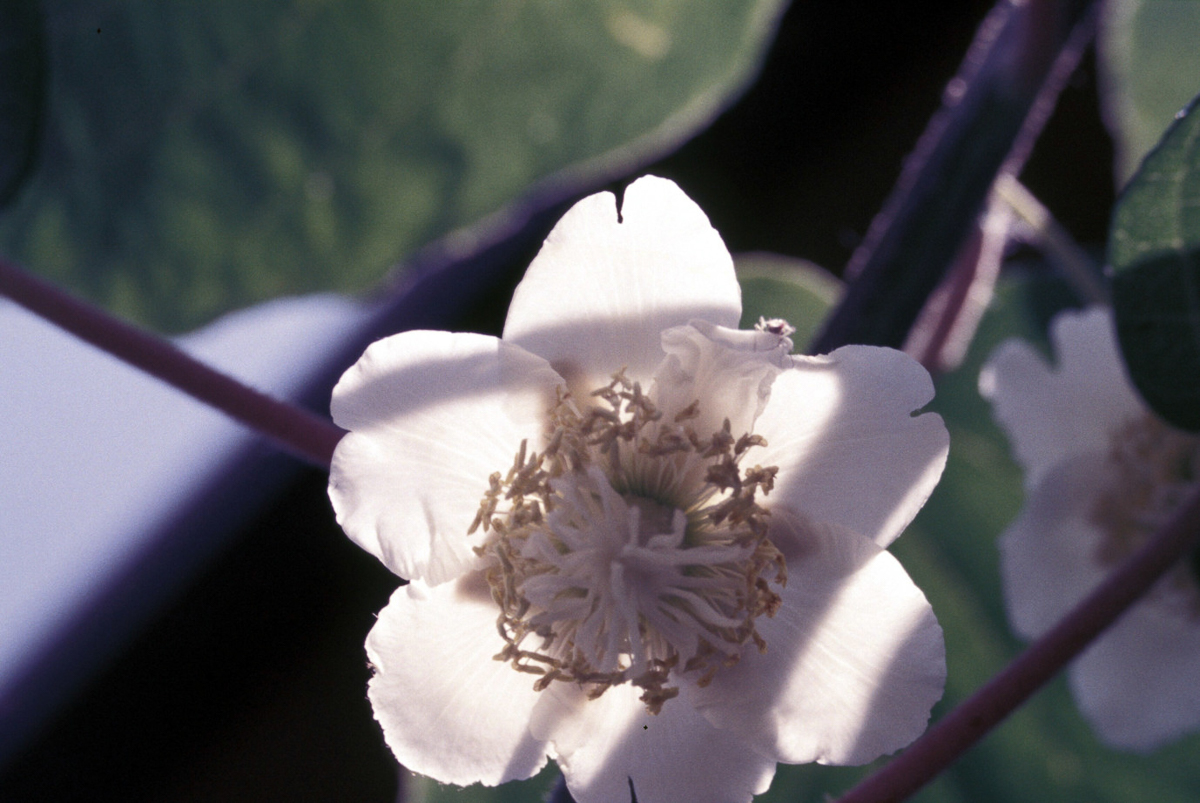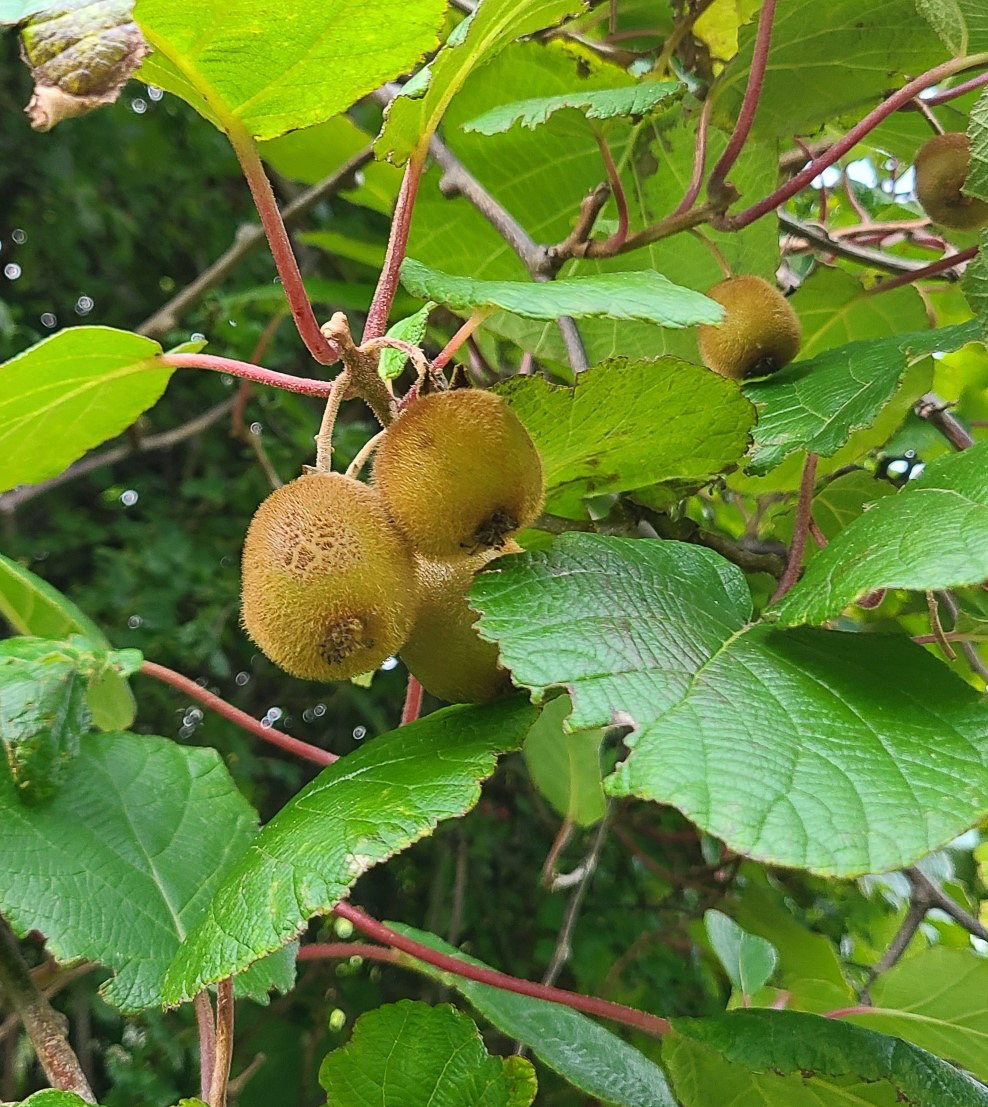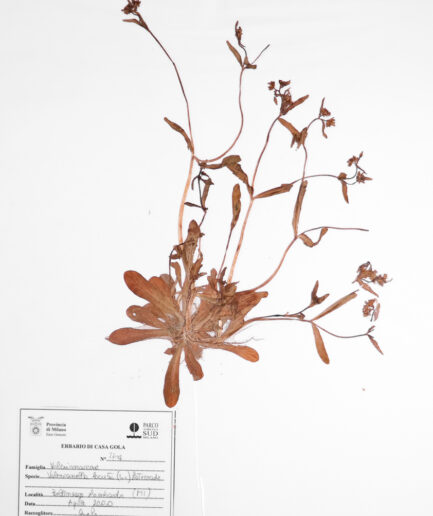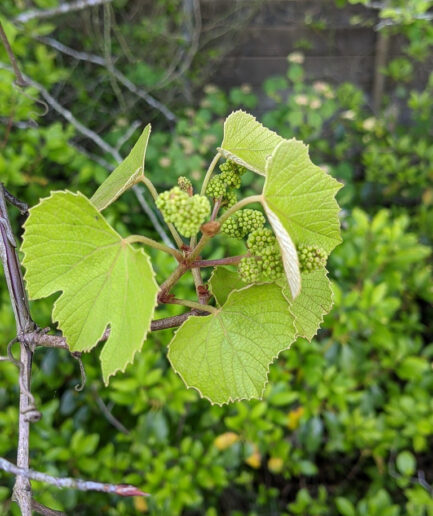Kiwi
Scientific Name: Actinidia deliciosa (A.Chev.) C.F.Liang & A.R.Ferguson
Family: Actinidiaceae
MORPHOLOGY
Growth habit and size: The plant is a large, deciduous climbing vine that can reach up to 10 m in height. Since it is a cultivated plant, wild specimens can vary greatly due to human selection.
Stem: The plant anchors itself to supports, typically trees or rocks, by twining its stem, which curls like a tendril at the end (like beans). Older branches have rough, warty gray bark, the trunk has rough, scaly, brownish-gray bark, while young branches have an herbaceous texture.
Leaves: Young leaves are heart-shaped and pointed, while mature leaves (when the plant begins to flower) are distinctly rounded, often convex on the dorsal side. Young shoots, leaf petioles, and flower stalks are bristly and hairy with brown hairs.
Flowers: The flowers are creamy-white, with five to six petals, ranging in diameter from 3 to 5 cm, hanging on a hairy stalk. Kiwi plants are dioecious, meaning there are male plants and female plants (which produce the fruits); hermaphrodite plants are very rare. Identifying the sex of the flowers is not easy because they have advanced, but not complete, dioecy: both male and female flowers have rudimentary and atrophic elements of the opposite sex. Sex can also be distinguished by the fact that female flowers are spaced apart to allow fruit development and are not clustered like male flowers. Both a male and a female flower are present in the photos. The plant blooms from May to July.
Fruits and seeds: The fruits are long oval berries with tough, hairy skin. The skin and hairs have a corky texture with high tannin content. The flesh is firm, sweet, and tangy; hundreds of small dark seeds are radially distributed on a more or less fibrous central axis called the “columella.”
DISTRIBUTION AND HABITAT
The plant is cultivated throughout almost all of Italy, with wild specimens present in many regions. It is found from sea level up to 1,000 m. In nature, it grows where there are trees, ruins, or rocks to cling to, and in areas rich in humidity.
USE
The slightly acidic fruits are rich in vitamin C.
INTERESTING FACTS
In 1845, thanks to Robert Fortune’s explorations in China, the Western world became familiar with this plant. In the early 20th century, it was imported to New Zealand, where its cultivation spread (it was named after the kiwi, the national bird of New Zealand). Around 1965, it was imported to the United States, where cultivation multiplied. In Italy, the first plants were planted around Lake Maggiore, and in the 1970s, cultivation began in Veneto, Romagna, Friuli, Trentino, Piedmont, Lazio, and Marche.
Photo: Licensed freely by Saxifraga and Rutger Barendse, and kindly provided by Claudio Farinati.























